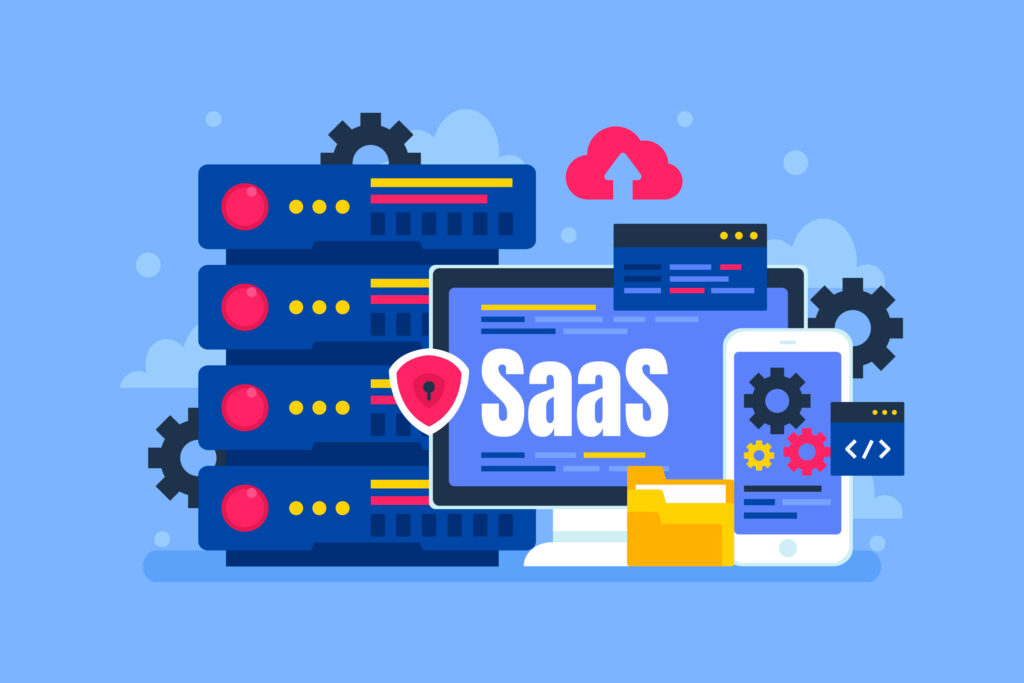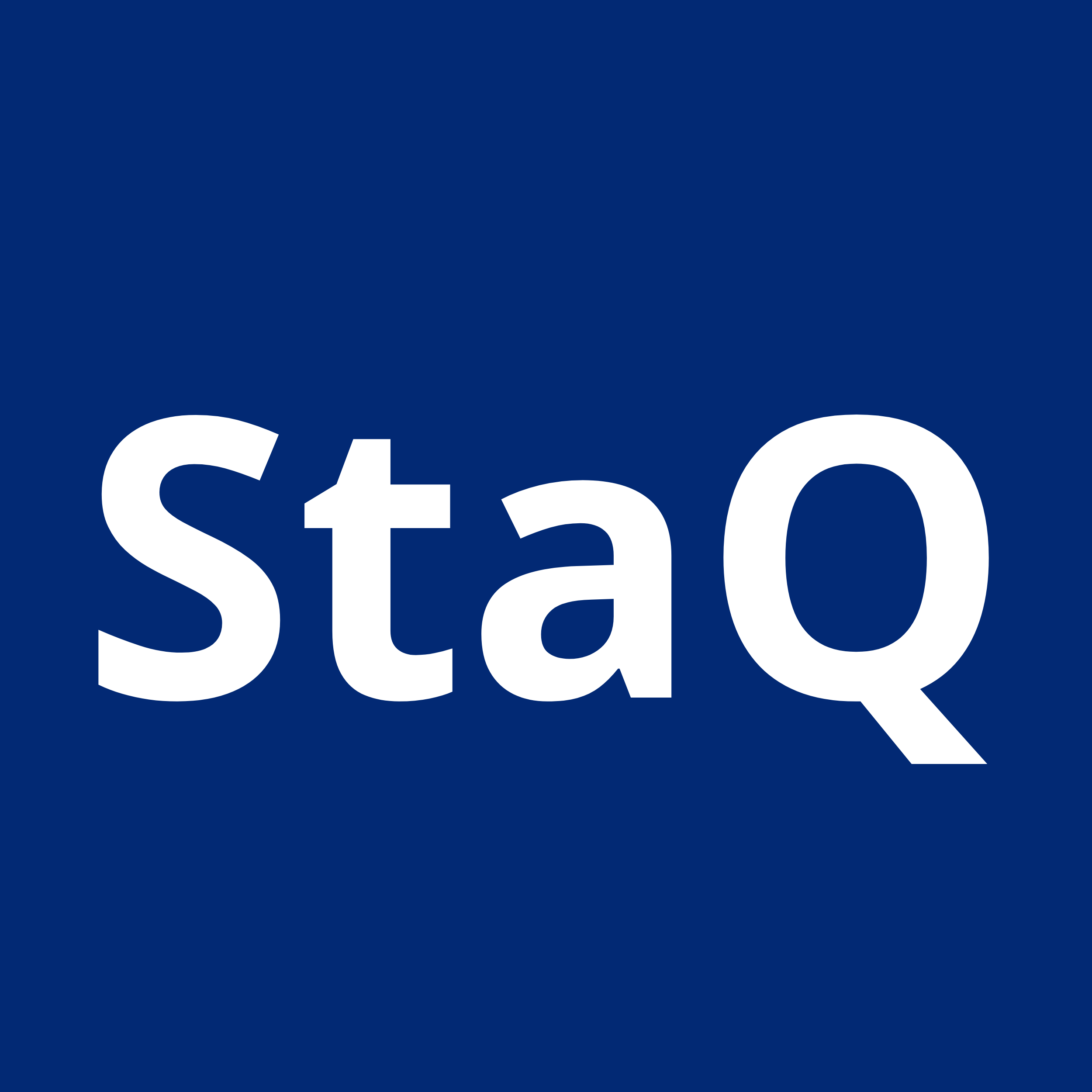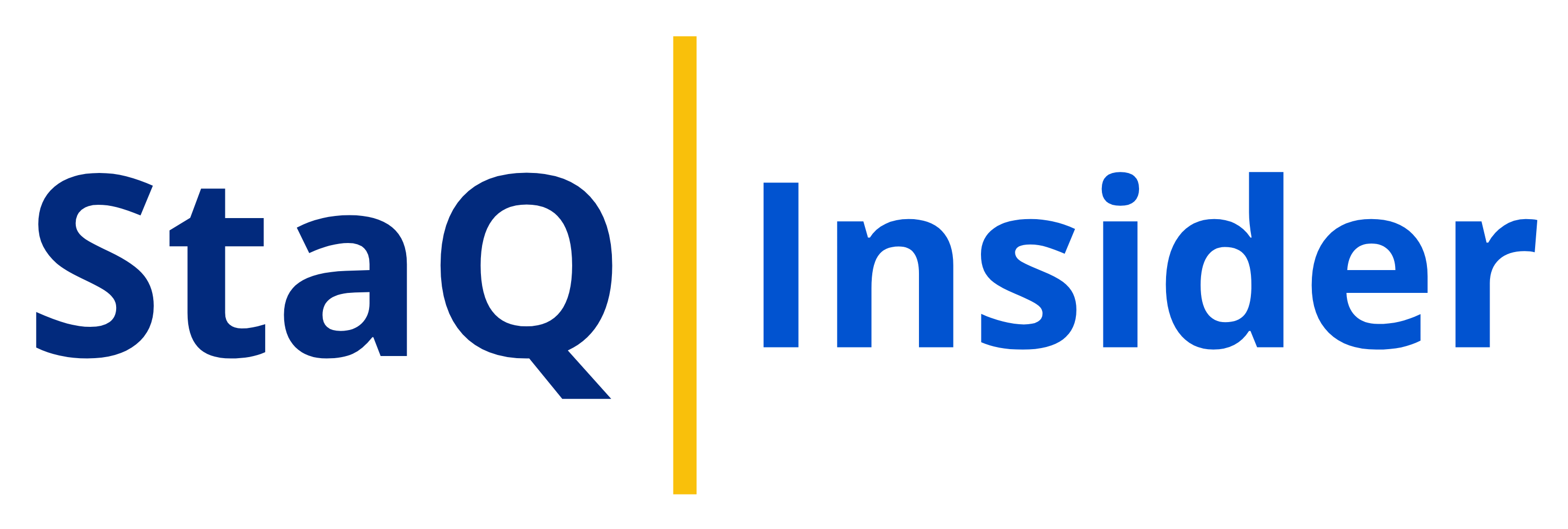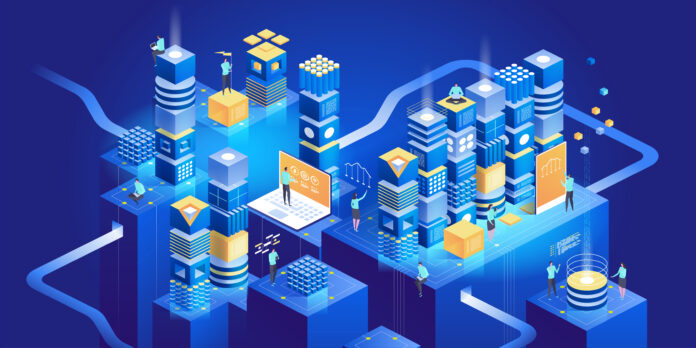Business today runs on data, and data lives in your IT infrastructure. As a result, effectively managing that infrastructure is critical for ensuring operational efficiency, minimizing downtime, and maintaining a competitive edge. This is where IT infrastructure management software comes into play.
This powerful tool provides a centralized view to monitor and manage your entire IT ecosystem, automating tasks and enabling real-time monitoring to quickly resolve issues before disruptions occur. But is it a must-have for every business? Let’s investigate the true potential of this technology.
IT Infrastructure Management Explained
IT Infrastructure Management (ITIM) refers to the process of overseeing and managing the components that constitute an organization’s information technology (IT) infrastructure. This includes hardware assets like servers, storage devices, networking equipment, and end-user devices, as well as software components like operating systems, databases, and applications.
Imagine your company’s IT infrastructure as the behind-the-scenes network of roads and bridges that carry information. ITIM is like the traffic control system for those roads, making sure everything runs smoothly and efficiently.
The primary goal of ITIM is to ensure a reliable, secure, and efficient IT infrastructure that supports the organization’s operations and objectives. Key activities include:
- Hardware Management: Procuring, deploying, maintaining, and retiring hardware assets like servers, storage systems, networking devices, and user devices.
- Software Management: Installing, configuring, updating, and patching software applications and operating systems.
- Network Management: Designing, implementing, and maintaining networks (LAN, WAN, wireless), ensuring network security, monitoring performance, and troubleshooting issues.
- Data Management: Managing data storage, backup and recovery, data integrity, availability, and compliance with security and privacy regulations.
- IT Service Management: Delivering IT services, managing service desk operations, incidents, problems, changes, and monitoring service level agreements (SLAs).
- IT Security Management: Implementing and maintaining security measures to protect against cyber threats, malware, unauthorized access, and data breaches.
- IT Asset Management: Tracking, managing, and optimizing IT assets throughout their lifecycle for efficient use and cost-effectiveness.
- IT Operations Management: Monitoring and managing daily IT operations, performance, capacity planning, and incident response.
- IT Governance and Compliance: Ensuring IT infrastructure and operations align with industry standards, regulations, and best practices for data privacy, security, and risk management.
Who is an IT Infrastructure Manager?
An IT infrastructure manager is a professional responsible for overseeing and managing an organization’s IT infrastructure, which includes hardware, software, networks, and related components that enable the delivery of IT services. Their main duties include:
- Managing day-to-day operations and projects within the IT infrastructure team
- Recruiting, training, and monitoring the performance of IT infrastructure staff
- Overseeing the IT budget and ensuring cost-effectiveness
- Monitoring server hardware, software, and operating systems
- Coordinating technology installations, upgrades, and maintenance
- Selecting and purchasing new and replacement hardware and software
- Testing, troubleshooting, and modifying information systems
- Generating performance reports for operating systems and the service desk
- Ensuring IT activities comply with applicable laws, codes, and regulations
- Developing network disaster recovery plans and backup procedures
- Keeping up to date with advances in technology and industry best practices
IT infrastructure managers typically report to an operations director, CIO, or senior leader in the IT organization. They work closely with networking, server, and physical cabling teams to deliver reliable, high-quality IT services that align with business needs.
What value does IT Infrastructure Management Software bring to this scenario?
IT infrastructure management software acts like a super-powered toolbox for the IT manager, giving them greater control, automation, and insights over the complex IT landscape. Here’s how it adds value:
- Centralized view: Provides a single dashboard for monitoring the entire IT infrastructure, enabling faster problem identification and resolution.
- Automation: Automates repetitive tasks like software updates, security checks, and configuration management, freeing up IT staff for strategic work.
- Improved performance: Continuously monitors performance, identifies bottlenecks, and optimizes resource allocation for smooth operation.
- Proactive maintenance: Predicts potential issues before they arise, allowing preventative measures to avoid downtime and disruptions.
- Data-driven decisions: Provides comprehensive data and reports to empower IT managers to make informed decisions about resource allocation, upgrades, and future IT needs.
- Enhanced security: Continuously monitors for threats, manages user access, and ensures compliance with regulations.
- Reduced costs: Saves money by automating tasks, optimizing resource allocation, and preventing downtime.
- Improved efficiency: Streamlines IT operations, leading to faster processes and better productivity.
- Business agility: Enables the IT infrastructure to adapt to changing business needs more easily.
- Empowered IT team: Frees IT staff from tedious tasks, gives them better control, and ensures the IT infrastructure provides a strong foundation for the business.
IT infrastructure management software is a game-changer for IT teams. It empowers them to work smarter, not harder, by providing a centralized view, automation, and valuable insights.
What are the Different Types of IT Infrastructure Management Software?
IT infrastructure management software can be categorized into several types based on their specific functions and capabilities. Here are some common types of IT infrastructure management software:
-
IT Asset Management (ITAM) Software:
This type of software helps organizations track, manage, and optimize their IT assets throughout their lifecycle, including hardware (servers, desktops, laptops, printers, etc.), software licenses, and other IT components. Examples include ServiceNow ITAM, BMC Helix ITSM, and Ivanti Landesk.
-
Network Management Software:
These solutions are designed to monitor, configure, and manage an organization’s computer networks, including LANs, WANs, and wireless networks. They provide features like network mapping, performance monitoring, configuration management, and troubleshooting capabilities. Examples include SolarWinds Network Performance Monitor, Nagios, and Cisco Prime Infrastructure.
-
Server Management Software:
These tools are used to manage and monitor physical and virtual servers, including their hardware resources, operating systems, and applications. They enable tasks like server provisioning, configuration management, performance monitoring, and patch management. Examples include Microsoft System Center, VMware vCenter, and SolarWinds Server & Application Monitor.
-
IT Service Management (ITSM) Software:
ITSM solutions provide a comprehensive suite of tools for managing the delivery of IT services to end-users, including incident management, problem management, change management, service level management, and knowledge management. Examples include ServiceNow, BMC Helix ITSM, and Cherwell Service Management.
-
Cloud Management Platforms:
As organizations adopt cloud computing, cloud management platforms help manage and monitor cloud infrastructure, applications, and services across multiple cloud providers. They provide features like resource provisioning, cost optimization, performance monitoring, and security management. Examples include VMware vRealize Cloud Management, Microsoft Azure Cloud Management, and AWS Management Console.
-
Configuration Management Software:
These tools help manage and track changes to IT infrastructure components, including servers, networks, and applications. They ensure consistency, security, and compliance across the IT environment. Examples include Ansible, Puppet, and Chef.
-
Application Performance Monitoring (APM) Software:
APM solutions monitor and manage the performance and availability of software applications, providing insights into application performance, user experience, and potential issues. Examples include AppDynamics, Dynatrace, and New Relic.
-
Backup and Disaster Recovery Software:
These solutions are designed to backup and protect an organization’s data and IT infrastructure, enabling rapid recovery in the event of data loss, system failures, or disasters. Examples include Veeam Backup & Replication, Commvault Complete Data Protection, and Veritas NetBackup.
Organizations often adopt a combination of these tools based on their specific IT infrastructure and management requirements.
Learn How SAAS Tools Automate Your Busywork: A Guide for Start-Up Founders

Popular IT Infrastructure Management Software in 2024
-
SolarWinds N-central:
- SolarWinds N-central offers comprehensive IT infrastructure management solutions for businesses of all sizes.
- Pricing: Starting from $25 per month.
- Features: Remote monitoring, automation, patch management, network discovery.
- Pros: User-friendly interface, robust monitoring capabilities.
- Cons: Higher pricing for advanced features.
-
ManageEngine OpManager:
- ManageEngine OpManager provides network monitoring and IT infrastructure management tools.
- Pricing: Starting from $245 per year.
- Features: Network performance monitoring, fault management, customizable dashboards.
- Pros: Scalable solution, extensive monitoring capabilities.
- Cons: Steeper learning curve for beginners.
-
PRTG Network Monitor:
- PRTG Network Monitor is a comprehensive IT infrastructure monitoring tool.
- Pricing: Starting from $1,750 for 500 sensors.
- Features: Real-time monitoring, customizable alerts, network mapping.
- Pros: Easy setup, extensive sensor options.
- Cons: Cost may be prohibitive for small businesses.
-
Nagios XI:
- Nagios XI is a robust IT infrastructure monitoring and alerting solution.
- Pricing: Starting from $1,995 for 100 nodes.
- Features: Network monitoring, capacity planning, reporting.
- Pros: Highly customizable, strong community support.
- Cons: Complex setup for beginners.
-
Microsoft System Center Operations Manager:
- Microsoft System Center Operations Manager provides comprehensive monitoring and management for IT infrastructure and applications.
- Pricing: Custom pricing based on deployment.
- Features: Real-time monitoring, performance analysis, event management.
- Pros: Seamless integration with Microsoft ecosystem, powerful reporting capabilities.
- Cons: Steep learning curve for complex environments.
-
ServiceNow:
- ServiceNow is a leading ITSM software known for its comprehensive service management solutions.
- Pricing: Custom pricing based on requirements.
- Features: Incident management, problem management, change management.
- Pros: Extensive customization options, and strong workflow automation.
- Cons: Higher cost for advanced features.
-
Zabbix:
- Zabbix is an open-source IT infrastructure monitoring platform.
- Pricing: Free for the open-source version, enterprise pricing available.
- Features: Agentless monitoring, auto-discovery, web monitoring.
- Pros: Scalable, extensive monitoring capabilities.
- Cons: Requires technical expertise for setup.
-
Datadog:
- Datadog provides cloud-scale monitoring for IT infrastructure and applications.
- Pricing: Starting from $15 per host per month.
- Features: Real-time metrics, log management, APM.
- Pros: Unified platform, strong visualization tools.
- Cons: Cost may be high for small businesses.
-
IBM Cloud Pak for Multicloud Management:
- IBM Cloud Pak offers multi-cloud management solutions for IT infrastructure.
- Pricing: Custom pricing based on deployment.
- Features: Multicloud management, automation, security.
- Pros: Enterprise-grade solution, integrated management capabilities.
- Cons: Higher cost for the full feature set.
-
Dynatrace:
- Dynatrace offers AI-powered monitoring for IT infrastructure and applications.
- Pricing: Custom pricing based on requirements.
- Features: AI-driven insights, cloud monitoring, user experience monitoring.
- Pros: Advanced AI capabilities, and comprehensive monitoring.
- Cons: Higher pricing for advanced features.
Disclaimer: The information provided is for informational purposes only and shouldn’t be considered exhaustive or an official recommendation. Pricing may vary, so please refer to the vendor websites for the latest details.

IT Infrastructure Management Software: Hype or Necessity?
IT Infrastructure Management Software (ITIM) is definitely more necessity than hype. Here’s a breakdown to dispel any hype misconceptions:
Why it’s Necessary:
- Growing Complexity: IT environments are becoming increasingly intricate with cloud adoption, hybrid systems, and an explosion of devices. ITIM software provides a centralized view and control over this complexity.
- Efficiency and Automation: Manual IT management is inefficient and prone to errors. ITIM software automates repetitive tasks, freeing IT staff for strategic work and improving overall efficiency.
- Proactive Problem Solving: ITIM software can identify potential issues before they snowball into major outages. This proactive approach saves businesses downtime, money, and frustration.
- Enhanced Security: ITIM software offers features like threat detection, user access management, and compliance monitoring, significantly bolstering an organization’s security posture.
- Data-Driven Decisions: ITIM software generates comprehensive reports that empower informed decision-making about resource allocation, upgrades, and future IT investments.
Hype Considerations:
- Vendor Promises: Be wary of overblown vendor promises. ITIM software is a tool, and its success hinges on proper implementation and ongoing management.
- Not a Magic Bullet: ITIM software won’t solve all IT problems. It requires skilled IT staff to leverage its capabilities effectively.
- Cost Factor: ITIM software can be a significant investment. Carefully evaluate your needs and choose a solution that offers the right features and scalability for your organization.
In a nutshell, IT Infrastructure Management Software is a vital tool for organizations of all sizes. It streamlines IT operations, improves efficiency, and empowers proactive management.By implementing a solution strategically, you can reap the many benefits it offers.
Finding the Perfect Fit:
The IT infrastructure management software landscape is vast. How do you find the right fit for your organization? Here’s where StaQ.ai comes in.
At StaQ.ai, we understand that every organization is unique, with its own set of challenges and requirements. That’s why we’ve curated a comprehensive catalog of the industry’s leading IT infrastructure management software, meticulously vetted to ensure you have access to the best and most reliable tools available.
But we don’t stop there.
Introducing the StaQ Community, a dynamic platform where you can connect, collaborate, and learn from industry peers and thought leaders. Share insights, explore best practices, and stay ahead of the curve in the ever-changing world of IT infrastructure management.
Say goodbye to downtime! Discover proactive IT management with StaQ.ai!





